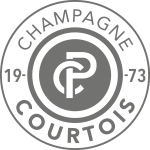Working the vines in Champagne
In Champagne, the vines require constant attention and a great deal of work is carried out by hand throughout the year.
La taille - From November to the end of March
This is the first job after the harvest and one of the most important. The vigour and fertility of the vine depend on pruning.
It involves pruning the vine to guide its future growth. The length, choice and distribution of buds will define the shape of the framework, which will then condition the foliage. Pruning also helps to regulate the vine's production so that it does not become exhausted.
There are 4 types of pruning authorised in Champagne, adapted according to grape variety and growth.
Le liage - march / april
Once the vine stock has been pruned, the wood that forms the framework must be tied to the support wire so that the plant grows horizontally to benefit from more sunlight.
Relevage et palissage - may to à july
The vine shoots need to be disciplined in order to aerate the foliage and allow the plant to catch as much sunlight as possible. They are therefore lifted and held vertically, separated and arranged between two wires held together with staples. All this work is done by hand.
Flowering takes place in June, lasting around eight days. The harvest generally takes place around 100 days later.
Le rognage - from June to the harvest
The vines are trimmed several times during the summer. This involves pruning back the vegetation and removing any new growth to encourage fruit set and give the bunches of grapes the maximum amount of sunlight needed for the fruit to ripen properly.
And the harvest is just around the corner, when we hope to reap the rewards of so much hard work, before setting off again for another year...
Les vendanges - mid-September et early October
The opening dates for the harvest vary from one vintage to another: they are determined by the Champagne interprofession according to objective criteria, with a view to ensuring optimum quality. The aim is to harvest grapes that are healthy (before any attacks of rot) and fully ripe.
The quality of future wines depends on the balance between sugar content and natural acidity. Regular measurements are therefore taken in the weeks leading up to the harvest to monitor changes in these two factors.
Harvesting machines are prohibited in Champagne. The grapes are picked exclusively by hand and transported to the press as quickly as possible to avoid any risk of oxidation.




